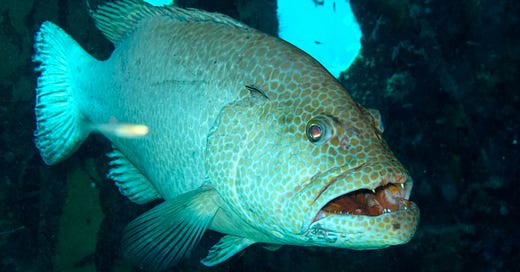My day job is as the news director for West Virginia Public Broadcasting. Our team reports regularly on the presence of “forever chemicals” in groundwater and in rivers, streams and fish around the state — as well as federal efforts to curb them, now.
Forever chemicals are commonly referred to as PFAS (per- and polyfluoroalkyl substances). The most famous of these is Teflon, but there is an entire category of these substances. They were designed to give materials like paints long-lasting qualities. The chemicals take forever to break down.
The problem is, these chemicals take forever to break down. Even after the paint has deteriorated or the firefighting foam has been cleaned up, to all of it's other uses, the PFAS themselves are still around.
Today, these chemical contaminants have been found in remote corners of the world — in Arctic sea ice, in fish.
“A study published in January by the American Chemical Society, a nonprofit scientific organisation, said that PFAS had been detected in the Arctic Ocean at a depth of 3,000 feet (914 metres).”
That’s from an article on Phys.org.
“From the tiny zooplankton eaten by shellfish, which are consumed by smaller fish and ultimately larger predators, PFAS lurked at every step along the way.
“A 2022 study in Australia established the transmission of PFAS from female turtles to their unborn offspring, while other research found traces in polar bear livers and birds, seals and other animals.”
Exposure to PFAS has been known to cause cancer and other illnesses along with complications for pregnancy. The problem is, there are 4,000 chemicals in the family. Many of them are proprietary so it is difficult to study them.
Earlier this week, the U.S. Environmental Protection Agency moved to limit six of the most common forms of the chemical from 70 parts per trillion to between 4 and 10 PPT.
Just last year, a statewide survey in West Virginia found high levels of PFAS in finished drinking water being delivered to homes.
It’s been 62 years since Rachel Carson published her book Silent Spring about the dangers of DDT killing birds and bees. The book met huge amounts of resistance from industry at the time, but it ultimately led to the creation of the environmental movement and for Richard Nixon to ban DDT, sign the EPA and the clean water and air acts into law. That all happened between 1970 and 1972.
The first Earth Day was April 22, 1972 and it grew out of the environmental movement of the time as well. Today, kids are taught in schools to protect the environment and Earth Day is something they expect to discuss every spring.
As we approach the 52nd anniversary of the first day, it makes me wonder if PFAS chemicals are our new DDT. There isn’t as clear of a connection between problems with PFAS as there was with DDT — so far. But its pure pervasiveness and resistance to degradation once it is in nature makes it just as concerning.
I’m keeping this Substack free for now, but if you’d like to support it anyway, buy me a cup of Kofi.
I also recommend you follow me on my Facebook Author Page, Instagram and Threads.




